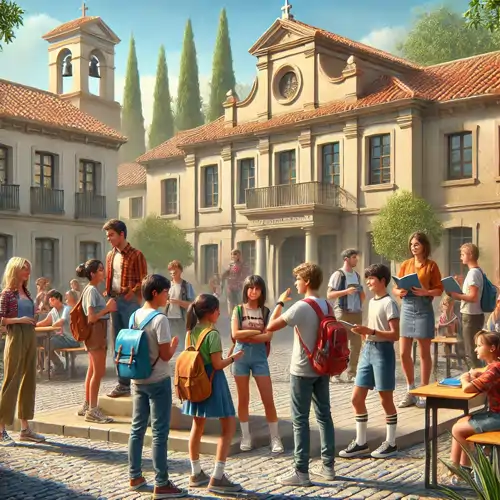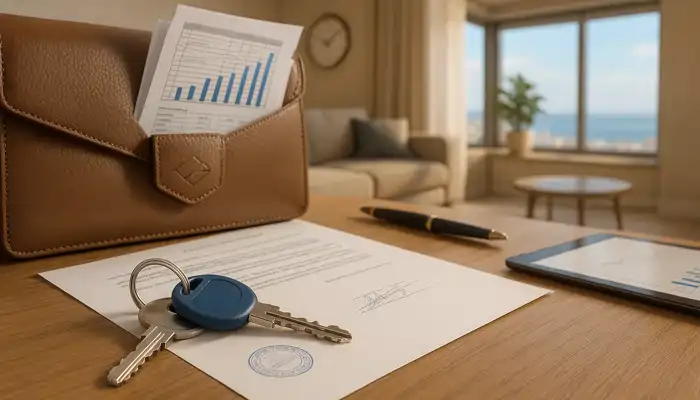Preparation for the school year in Spain often raises many questions and concerns among parents. Understanding the structure of the school education system, calculating the school expenses, and choosing the appropriate educational institution — all of this requires knowledge and thorough analysis. In this article, we will review the main types of schools, the key stages of education, and how to plan a budget when moving to or already living in the kingdom.
Why the Issue of Cost is So Relevant
In many cases, parents face uncertainty: exactly how much will have to be spent on stationery, textbooks, uniforms, and other necessities. In addition, there may be potential payments for the cafeteria, extracurricular activities, and sometimes even for the education itself (when choosing the private format). All of these expenses can become a significant item in the budget. Therefore, for families planning to move to or already residing in Spain, it is important to analyze all possible costs in advance to avoid unpleasant surprises.
Education Structure in Spain
The education system in this country is divided into several stages. Before compulsory education, there is the preschool stage, when children attend infantil (the equivalent of kindergarten, from 3 to 6 years old). Then the main periods begin:
- Educación Primaria — primary school, lasting 6 years (from 6 to 12 years old).
- ESO (Educación Secundaria Obligatoria) — compulsory secondary education, lasting 4 years (from 12 to 16 years old).
- Bachillerato (full secondary education) — 2 years of study (from 16 to 18 years old), which is not compulsory but necessary for university admission.
There are also vocational training programs (the so-called cycles to obtain a profession) and university admission. However, the main compulsory stage is 10 years of education (6 years in primary school and 4 years in ESO).
Types of Schools and Their Differences
To understand how the overall school expenses are formed, it is necessary to know in which educational institution the child will study. In Spain, there are three main types of schools:
- Public schools (colegio público). Funded by the state budget, education is free. However, parents pay for textbooks, the cafeteria, the uniform (if there is one), and extracurricular activities.
- Charter schools (colegio concertado). These are semi-public schools, where part of the funding comes from the state and part from private organizations or family contributions. Education here is not as expensive as in fully private schools, but there is still a fee.
- Private schools (colegio privado). These are fully funded by parents or sponsorship structures. The cost of education varies depending on the reputation of the school, additional services (bilingual or trilingual programs, sports and art sections, individualized attention), and location.
Main Concerns of Parents When Choosing a School
- What budget should be allocated for the year?
- Where will the child receive a quality education, considering the language level?
- How can the parents' work schedule be coordinated with the child's timetable?
- How to organize extracurricular activities and who will pick up the child after classes?
The solutions to these questions can vary. For those focused on minimizing expenses, it is advisable to consider public schools: here there is no fee for education, but the cost of the cafeteria, educational materials, and possibly after-school care must be taken into account. If strengthening a foreign language is important, it might be better to choose a charter school with bilingual programs, where the cost is lower but the language preparation is more robust than in public institutions. For families with a larger budget or who wish to give their child a specialized profile, a private school is suitable.
Expenses: What the Cost Consists Of
Below is an approximate list of expense items that may arise when preparing a child for school in Spain:
- Textbooks and workbooks. In some regions there is a textbook exchange program, but it does not always cover all the necessary materials. The average cost of a set can range from 100 to 300 euros.
- Stationery. Paper, pens, pencils, notebooks, etc. — typically between 100 and 120 euros per year.
- Uniforms and sportswear. In public schools uniforms are often not required, but in charter and private schools they are standard practice. The cost here can reach 200–300 euros.
- Cafeteria. If the child stays for lunch, this adds an extra cost of 120–160 euros per month, depending on the type of school (public, charter, or private).
- Extracurricular activities and clubs. These can range from 20 to 80 euros per month per activity. For more specialized programs (music courses, sports schools), the expenses are higher.
- After-school care (before and after class hours). If the child arrives before the official start of classes or stays after school, parents pay for these services separately. The fee is usually between 50 and 90 euros per month.
Additionally, in public schools some families may be eligible for subsidies or discounts. For example, the cafeteria fee (in Spanish terminology comedor) can be partially or fully compensated for families with low incomes.
Schedule and Timetable: An Important Aspect for the Family
Many parents struggle with coordinating their work schedules with their child's study time. In Spain, depending on the school and the autonomous community, the timetable can vary:
- Jornada continua — classes usually run from 9 AM to 2 PM, after which children either go home or stay in the comedor.
- Jornada partida — from 9 AM to 12:30 PM and from 3 PM to 4:30 PM, which means a break between the morning and afternoon classes, when the child either has lunch at home or remains at school.
In each case, it is important to understand who and how will pick up the children if the parents work until late. Generally, schools offer the possibility for the child to stay at the institution for an additional fee, which solves the timetable issue but increases the overall school expenses.
Choosing the Educational Path: ESO and Bachillerato
The main compulsory stage after primary school is the ESO (Educación Secundaria Obligatoria), which lasts 4 years. Upon completing this cycle at age 16, the teenager can either continue with Bachillerato or opt for vocational courses. It is important to note that for university admission to Spanish public universities, a high average grade is usually required during the ESO and Bachillerato periods. If the child plans to attend university, it is advisable to choose a school that provides adequate preparation for final exams. If a practical profession is preferred, vocational training may be considered. Both options shape the child’s future and affect their prospects.
How to Reduce Expenses and Plan the Budget Correctly
Taking all of the above into account, it is advisable to plan expenses in advance. Below are a few recommendations:
- Confirm details with the school in advance. The list of required textbooks, the presence or absence of a uniform, the cost of after-school care and meals — all of this should be clarified before the start of the school year.
- Look for subsidy programs. In some regions there are textbook banks or grants for purchasing materials. Check with the school administration or the local municipality.
- Determine whether a private school is truly necessary. Sometimes a good charter school offers almost the same opportunities at a lower cost.
- Consider group extracurricular activities. Group formats are less expensive than individual lessons. This is especially relevant for primary school and the early stages of ESO.
- Plan the timetable in advance. If you know you will be working until late, it is more reasonable to choose a school closer to home or one that offers a good after-school program.
How to Choose a School: Key Factors
In addition to financial aspects, it is important to evaluate other parameters:
- Language preparation level. Some public and charter schools have strong English language programs or even bilingual programs (with some subjects taught in Spanish and others in English).
- Location. Transport accessibility is often a decisive factor, especially in large cities.
- Parental reviews. A well-informed school choice is possible by getting to know the real experiences of other families. You can talk with other parents to learn about the atmosphere and quality of education.
- Additional opportunities. Many schools offer art, sports, or intensive foreign language programs, which can be crucial for the child's future.
Conclusion
Preparing a child for school in Spain requires a comprehensive approach: it is necessary to understand the structure of local education, assess all potential expenses, and consider family circumstances. On one hand, many expenses (textbooks, sports uniforms, extracurricular clubs) are typical in any country. On the other hand, the Spanish system offers additional support mechanisms (subsidies, textbook exchange programs, discounts for large families) that can reduce the overall school expenses.
To approach the issue properly, it is essential to know in advance all the specifics of the education, whether it is in the ESO (Educación Secundaria Obligatoria) or Bachillerato (full secondary education). Every parent wants to ensure quality education for their child while staying within budget. Ultimately, successful school preparation in Spain means gathering the necessary information in time, taking advantage of available opportunities, and organizing the educational process with the child's interests and the family's financial realities in mind.








